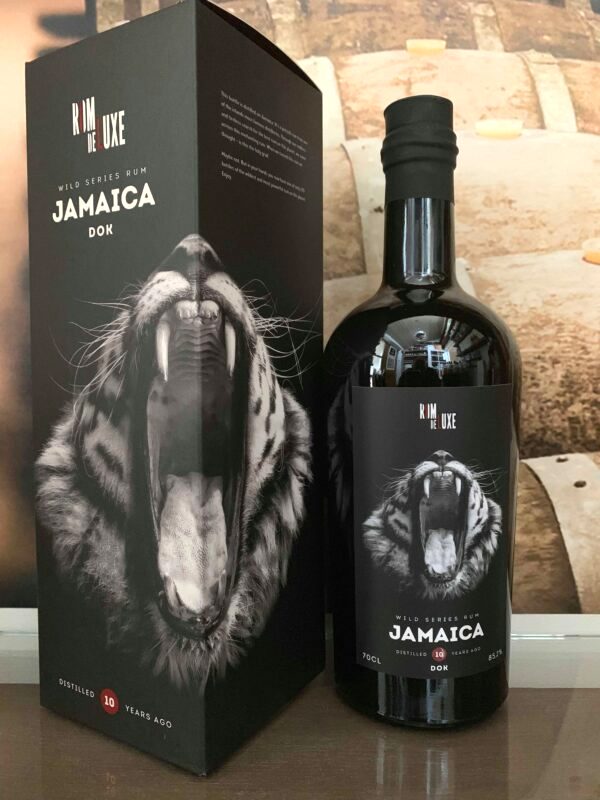
Photo (c) Romdeluxe
Romdeluxe in Denmark is at this point (2019) more a commercial rum club that makes private label bottlings and runs promotions around the country, than a true independent bottler — but since they do several releases, I’ll call them an indie and move right on from there. Earlier, in May 2019, they lit up FB by releasing this limited-edition high-ester funk-bomb, the first in their “Wild Series” of rums, with a suitably feral tiger on the label. I can’t tell whether it’s yawning or snarling, but it sure looks like it can do you some damage without busting a sweat either way.
This is not surprising. Not only is this Jamaican bottled at one of the highest ABVs ever recorded for a commercially issued rum – growling in at 85.2%, thereby beating out the Sunset Very Strong and SMWS Long Pond 9 YO but missing the brass ring held by the Marienburg – but it goes almost to the screaming edge of Esterland, clocking in, according to the label, at between 1500-1600 g/hlpa (the legal maximum is 1600)….hence the DOK moniker. Moreover, the rum is officially ten years old but has not actually been aged that long – it rested in steel tanks for those ten years, and a bit of edge was sanded away by finishing it for three months in small 40-liter ex-Madeira casks. So it’s a young fella, barely out of rum nappies, unrefined, uncouth and possibly badass enough to make you lose a week or two of your life if you’re not careful.
Knowing that, to say I was both doubtful and cautious going in would be an understatement, because the rum had a profile so ginormous that cracking the cap on my sample nearly lifted the roof of of the ten-storey hotel where I was tasting it (and I was on the second floor). The nose was, quite simply, Brobdingnagian, a fact I relate with equal parts respect and fear.
The crazy thing was how immediately sweet it was – a huge dose of fleshy fruits bordering on going bad for good, creme brulee, sugar water, honey, raisins and a salted caramel ice cream were the first flavours screaming out the gate (was this seriously just three months in Madeira?). It was huge and sharp and very very strong, and was just getting started, because after sitting it down (by the open window) for half an hour, it came back with vegetable soup, mature cheddar, brine, black olives, crisp celery, followed by the solid billowing aroma of the door being opened into a musty old library with uncared-for books strewn about and mouldering away. I say it was strong, but the nose really struck me as being more akin to a well-honed stainless-steel chef’s knife — clear and glittering and sharp and thin, and very very precise.
The clear and fruity sweet was also quite noticeable when tasted, combining badly with much more mucky, mouldy, dunder-like notes: think of a person with overnight dragon’s breath blowing Wrigley’s Spearmint gum into your face on a hot day. It was oily, sweaty, earthy, loamy and near-rank, but damnit, those fruits pushed through somehow, and combined with vanilla and winey tastes, breakfast spices, caramel, some burnt sugar, prunes, green bananas and some very tart yellow mangoes, all of which culminated in a very long, very intense finish that was again, extremely fruity – ripe cherries, peaches, apricots, prunes, together with thyme, mint lemonade, and chocolate oranges.
Whew! This was a hell of a rum and we sure got a lot, but did it all work? And also, the question a rum like this raises is this: does the near titanic strength, the massive ester count, the aged/unaged nature of it and the final concentrated finish, give us a rum that is worth the price tag?
Me, I’d say a qualified “Yes.” On the good side, the Wild Tiger thing stops just short of epic. It’s huge, displaying a near halitotic intensity, has a real variety of tastes on display, with the sulphur notes that marred the TECA or some other DOKs I’ve tried, being held back. On the other hand, there’s a lack of balance. The tastes and smells jostle and elbow each other around, madly, loudly, without coordination or logic, like screeching online responses to a Foursquare diss. There’s a lot going on, most not working well together. It’s way too hot and sharp, the Madeira finish I think is too short to round it off properly – so you won’t get much enjoyment from it except by mixing it with something else – because by itself it’s just a headache-inducing explosive discharge of pointless violence.
Then there’s the price, about €225. Even with the outturn limited to 170 bottles, I would hesitate to buy, because there are rums out there selling at a lesser cost and more quaffable strength, with greater pedigree behind them. Such rums are also completely barrel-aged (and tropically) instead of rested, and require no finishes to be emblematic of their country.
But I know there are those who would buy this rum for all the same reasons others might shudder and take a fearful step back. These are people who want the max of everything: the oldest, the rarest, the strongest, the highest, the bestest, the mostest, the baddest. Usefulness, elegance and quality are aspects that take a back seat to all the various “-estests” which a purchaser now has bragging rights to. I would say that this is certainly worth doing if your tastes bend that way (like mine do, for instance), but if your better half demands what the hell you were thinking of, buying a rum so young and so rough and so expensive, and starts crushing your…well, you know…then along with a sore throat and hurting head, you might also end up knowing what the true expression of the tiger on the label is.
(#632)(84/100)
Other notes
- It’s not mentioned on the label or website but as far as I know, it’s a Hampden.
- Like the Laodi Brown, the Wild Tiger Jamaican rum raises issues of what ageing truly means – it is 10 years old, but it’s not 10 years aged (in that sense, the label is misleading). If that kind of treatment for a rum catches on, the word “aged” will have to be more rigorously defined so as to find a place for the term “rested”.
- A list of the strongest rums I know is put together here.
- In the years following this review, Rom Deluxe expanded into a more commercial independent bottler role and in November 2021 I was happy to write a company biography.
Comment
These days I don’t usually comment on the price, but in this case there have been disgruntled mumbles online about the cost relative to the age, to say nothing of the packaging with that distinctive “10” suggesting it’s ten years old. Well, strictly speaking it is that old, but as noted before, just not aged that much and one can only wonder why on earth people bothered to arrest its development at all by having it in steel tanks, for such an unusually long time.
So on that basis, to blow more than €200 on a rum which has truly only been aged for three months (by accepted conventions of the term) seems crazy, and to set that price in the first place is extortionate.
But it’s not, not really.
At that ABV, you could cut it by half, make 340 bottles of 42% juice, and sell it for €100 as a finished experimental, and people would buy it like they would the white Habitation Veliers, maybe, for exotic value and perhaps curiosity. Moreover, there are no reductions in costs for the expenses of advertising, marketing and packaging for a smaller bottle run (design, printing, ads, labels, boxes, crates, etc) so the production cost per bottle is higher, and that has to be recouped somehow. And lastly, for a rum this strong and obscure, even if from Hampden, there is likely to be an extremely limited market of dedicated Jamaica lovers, and this rum is made for those few, not the general public…and those super geeks are usually high fliers with enough coin to actually afford to get one when they want one.
I’m not trying to justify the cost, of course, just suggest explanations for its level. Not many will buy this thing, not many can, and at end maybe only the deep-pocketed Jamaica lovers will. The rest of us, or the curious, will have to be content with samples.
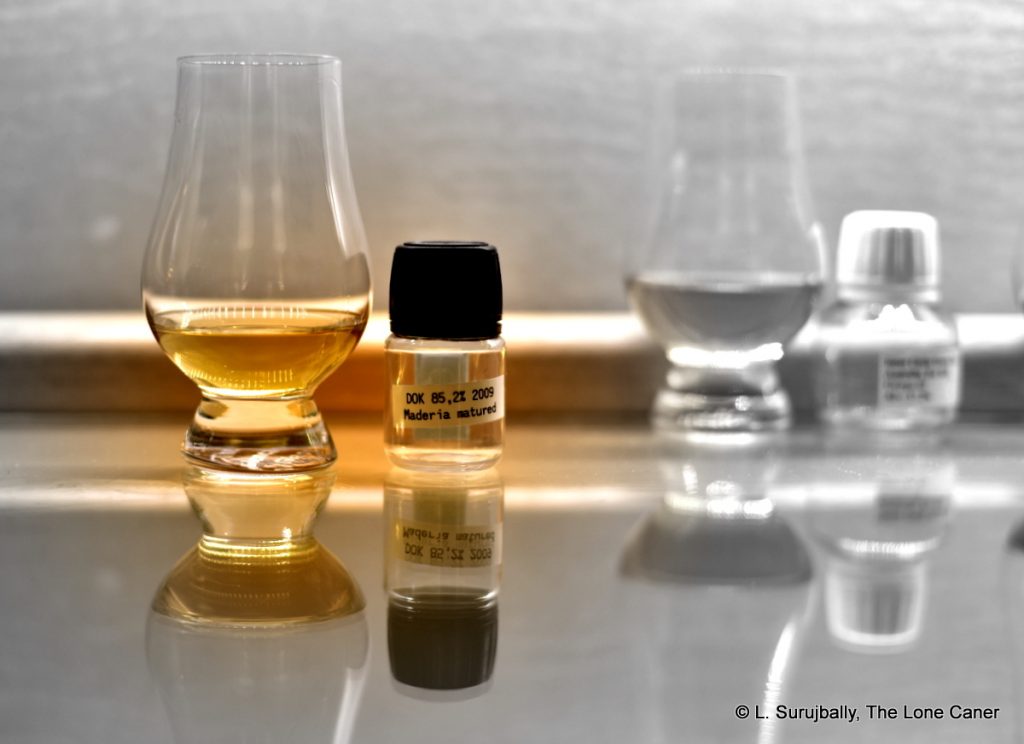
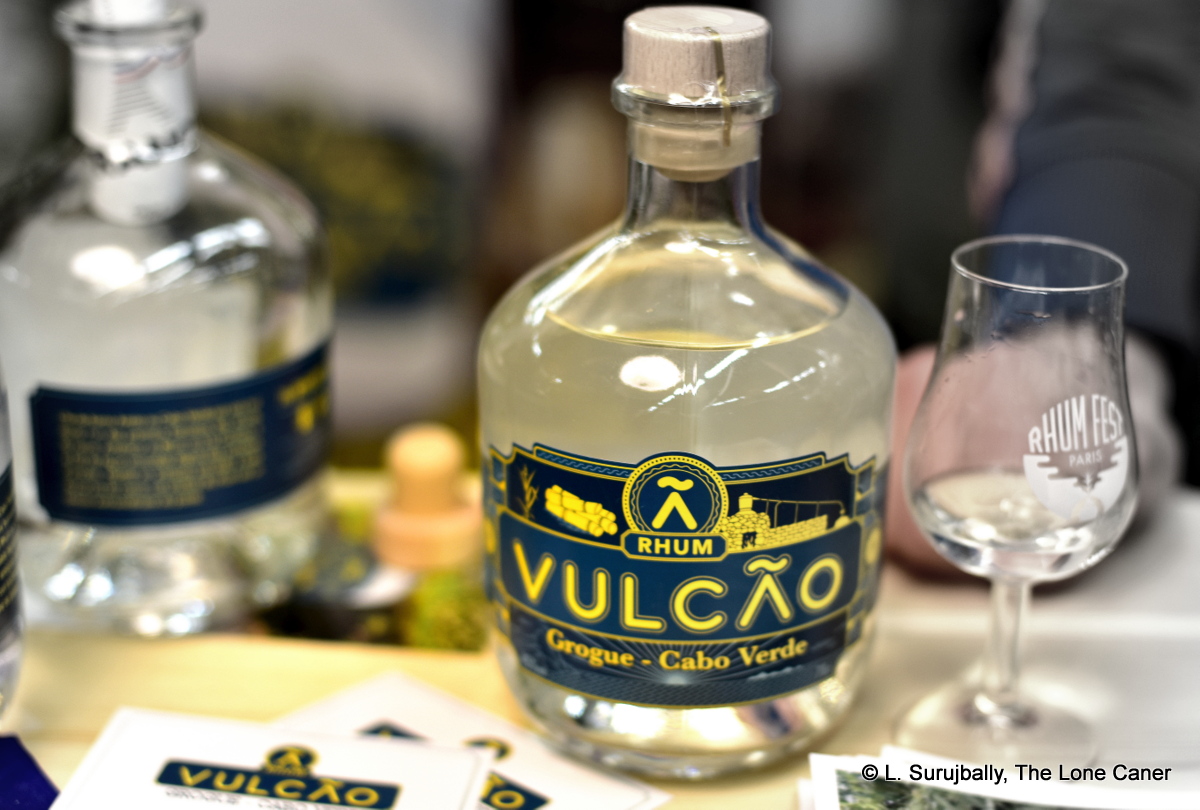
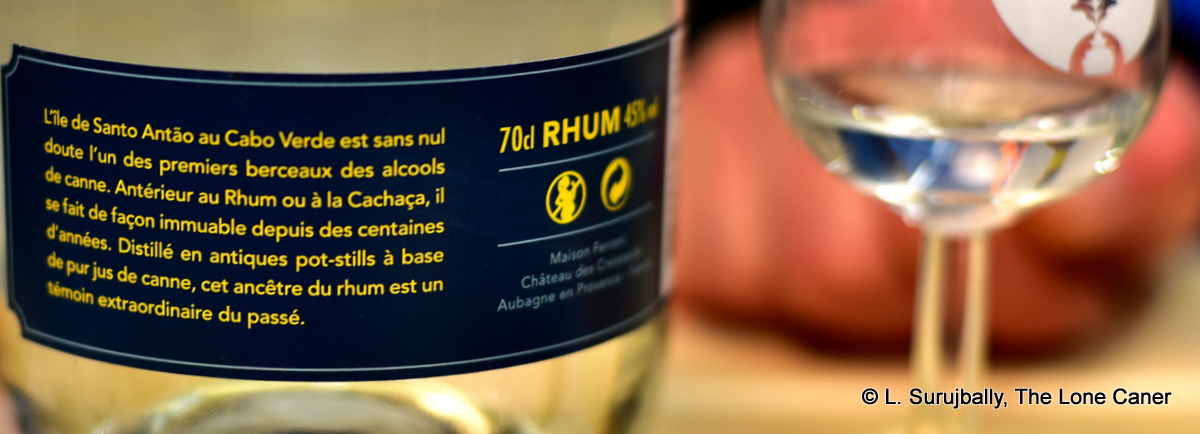
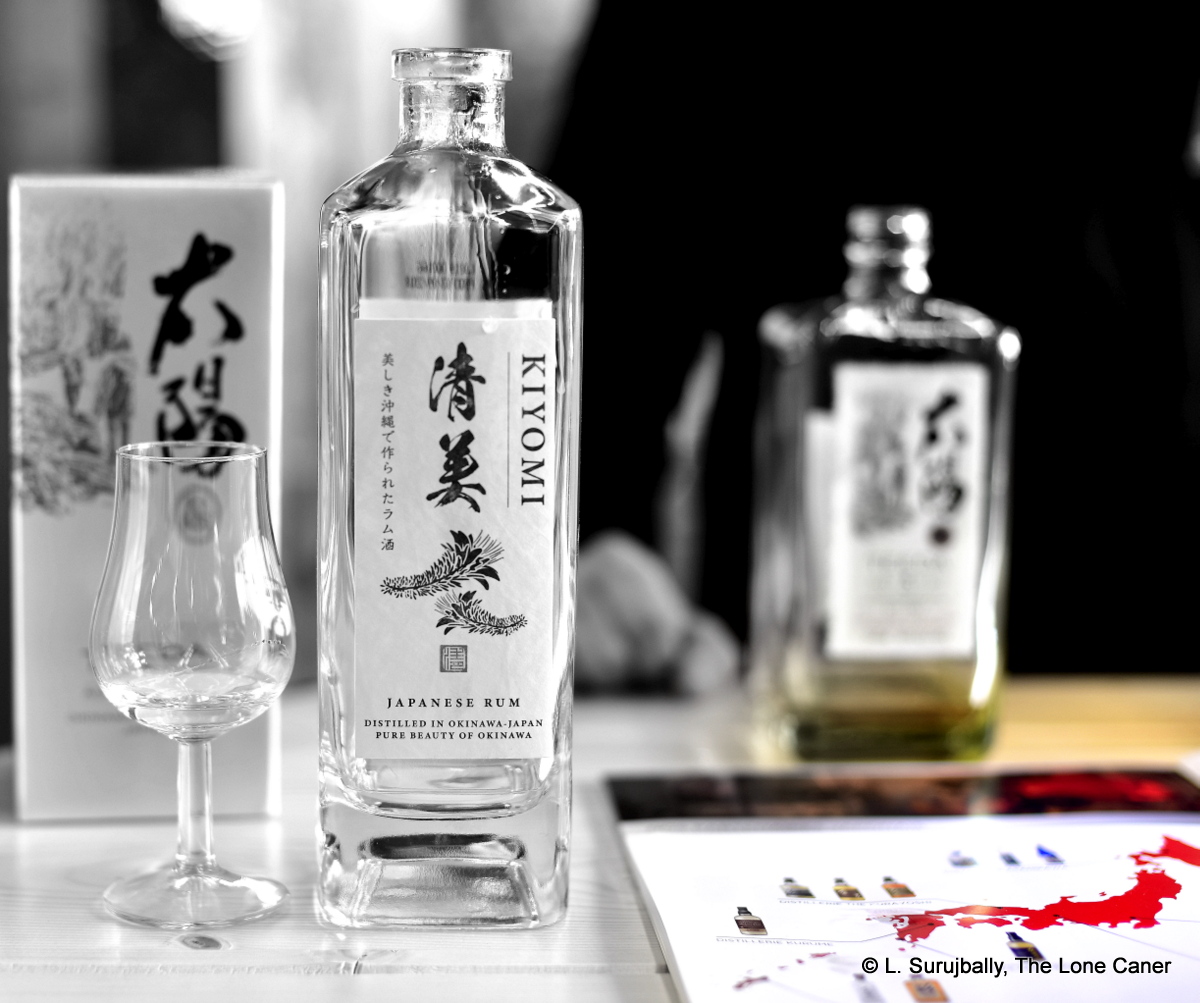
 I’ve never been completely clear as to what effect a resting period in neutral-impact tanks would actually have on a rum – perhaps smoothen it out a bit and take the edge off the rough and sharp straight-off-the-still heart cuts. What is clear is that here, both the time and the reduction gentle the spirit down without completely losing what makes an unaged white worth checking out. Take the nose: it was relatively mild at 40%, but retained a brief memory of its original ferocity, reeking of wet soot, iodine, brine, black olives and cornbread. A few additional nosings spread out over time reveal more delicate notes of thyme, mint, cinnamon mingling nicely with a background of sugar water, sliced cucumbers in salt and vinegar, and watermelon juice. It sure started like it was out to lunch, but developed very nicely over time, and the initial sniff should not make one throw it out just because it seems a bit off.
I’ve never been completely clear as to what effect a resting period in neutral-impact tanks would actually have on a rum – perhaps smoothen it out a bit and take the edge off the rough and sharp straight-off-the-still heart cuts. What is clear is that here, both the time and the reduction gentle the spirit down without completely losing what makes an unaged white worth checking out. Take the nose: it was relatively mild at 40%, but retained a brief memory of its original ferocity, reeking of wet soot, iodine, brine, black olives and cornbread. A few additional nosings spread out over time reveal more delicate notes of thyme, mint, cinnamon mingling nicely with a background of sugar water, sliced cucumbers in salt and vinegar, and watermelon juice. It sure started like it was out to lunch, but developed very nicely over time, and the initial sniff should not make one throw it out just because it seems a bit off.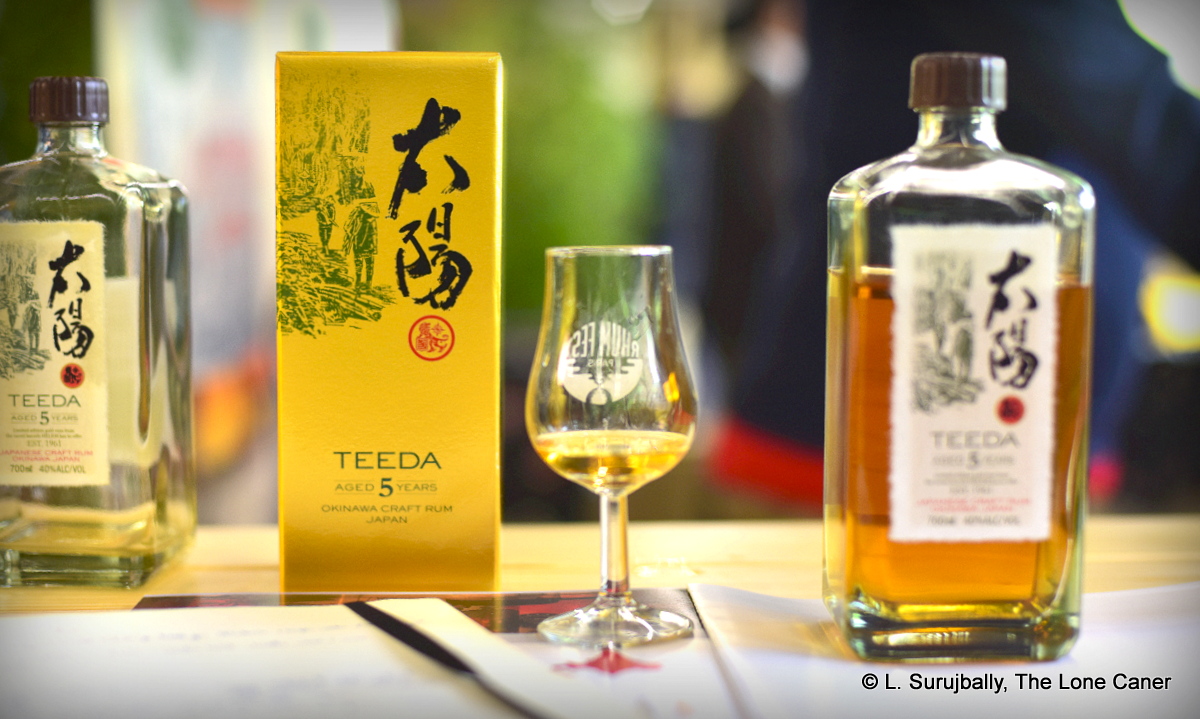
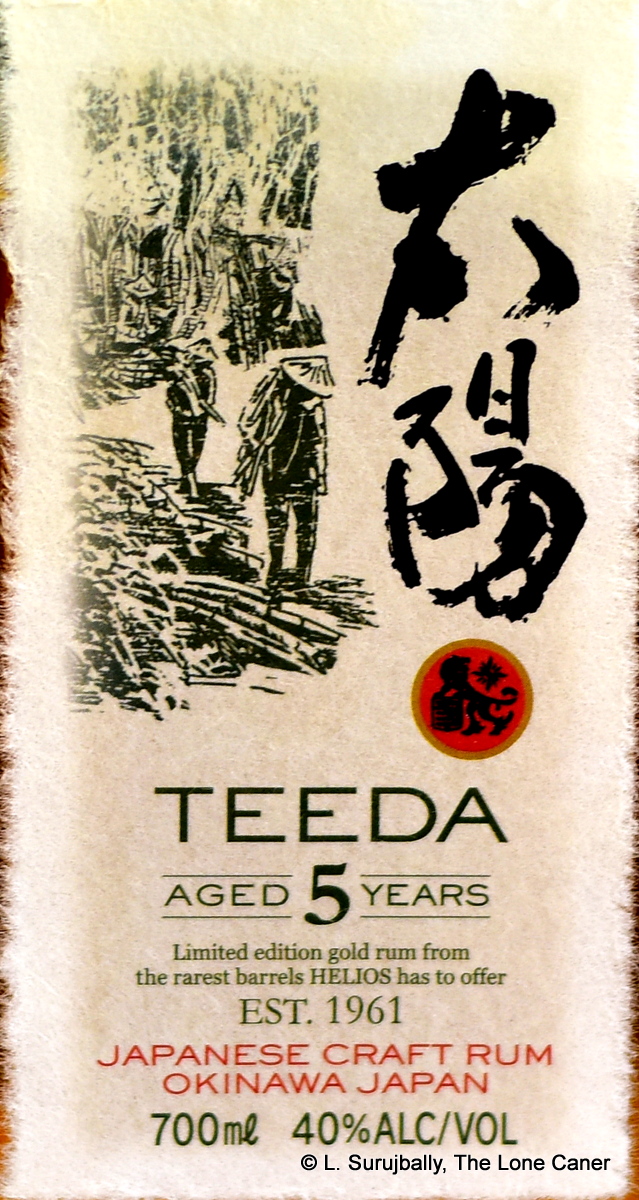
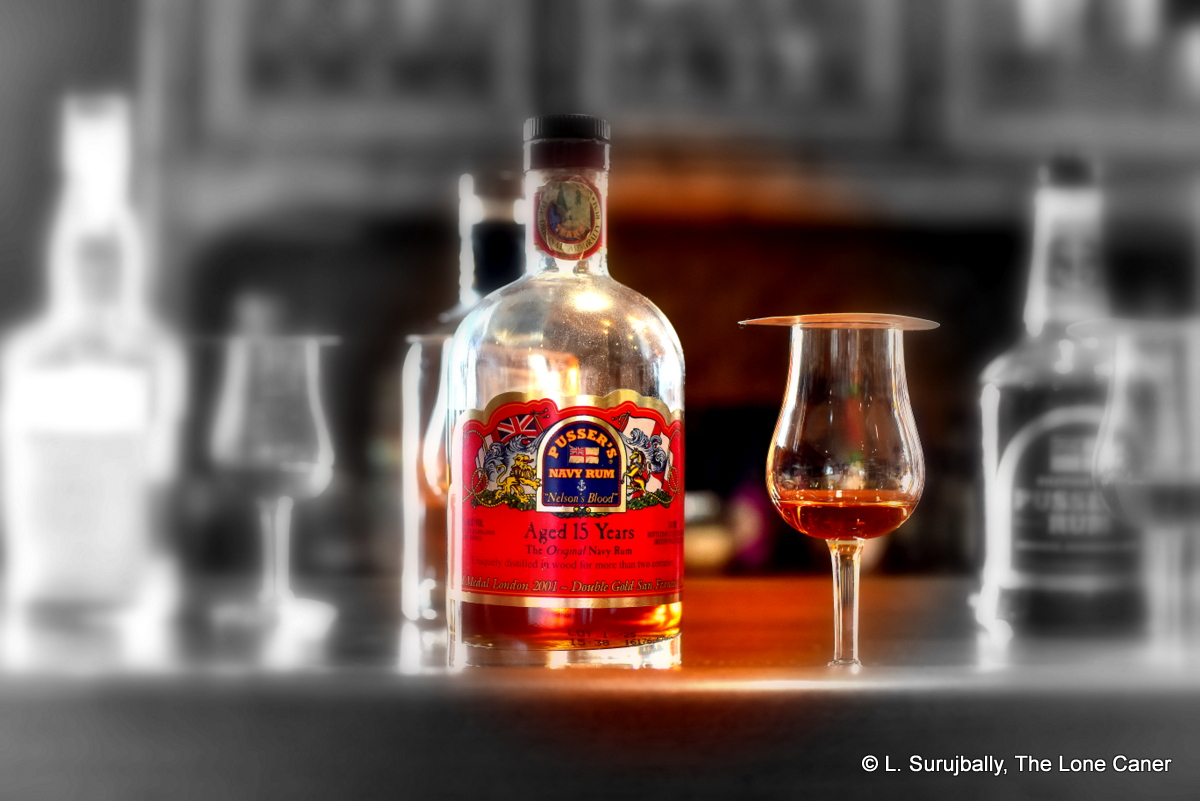
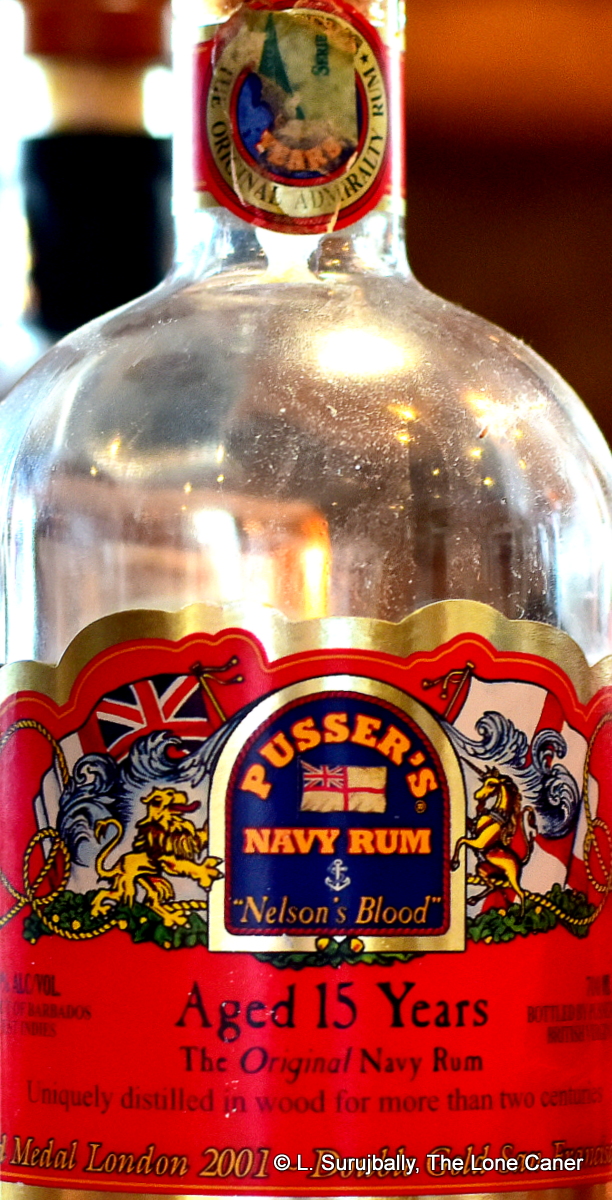 And why shouldn’t they? It’s a fifteen year old rum issued at a relatively affordable price, and is widely available, has been around for decades and has decent flavour chops for those who don’t have the interest or the coin for the limited edition independents.
And why shouldn’t they? It’s a fifteen year old rum issued at a relatively affordable price, and is widely available, has been around for decades and has decent flavour chops for those who don’t have the interest or the coin for the limited edition independents.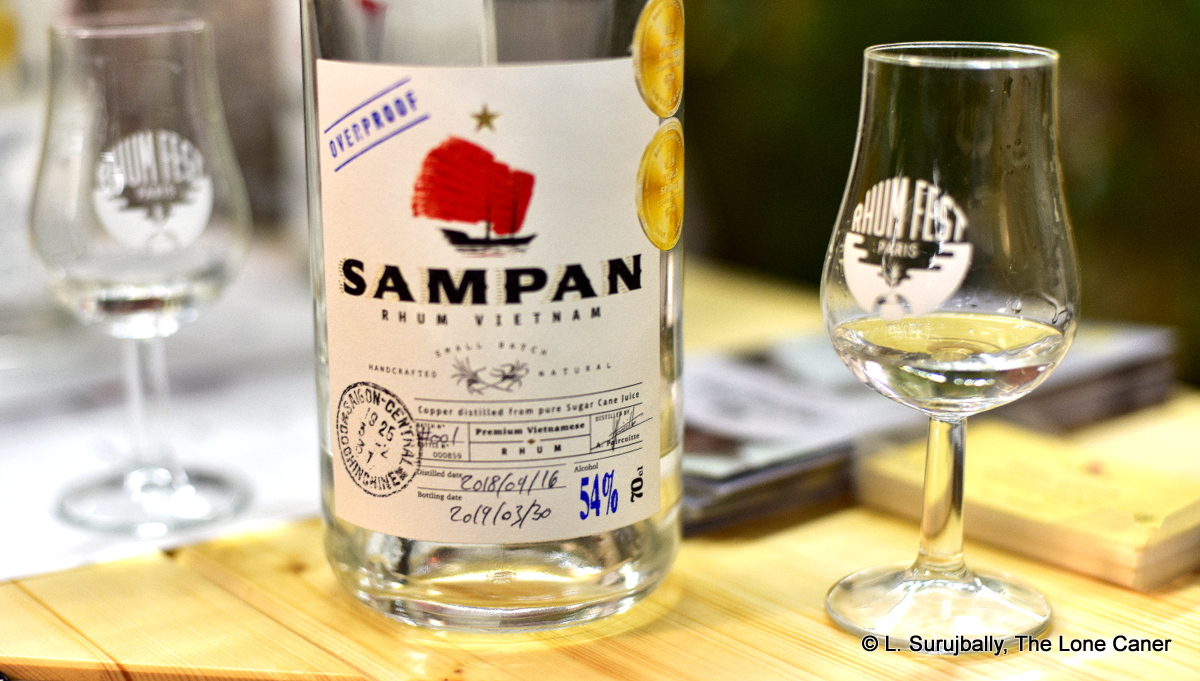
 Consider first the nose of this
Consider first the nose of this 
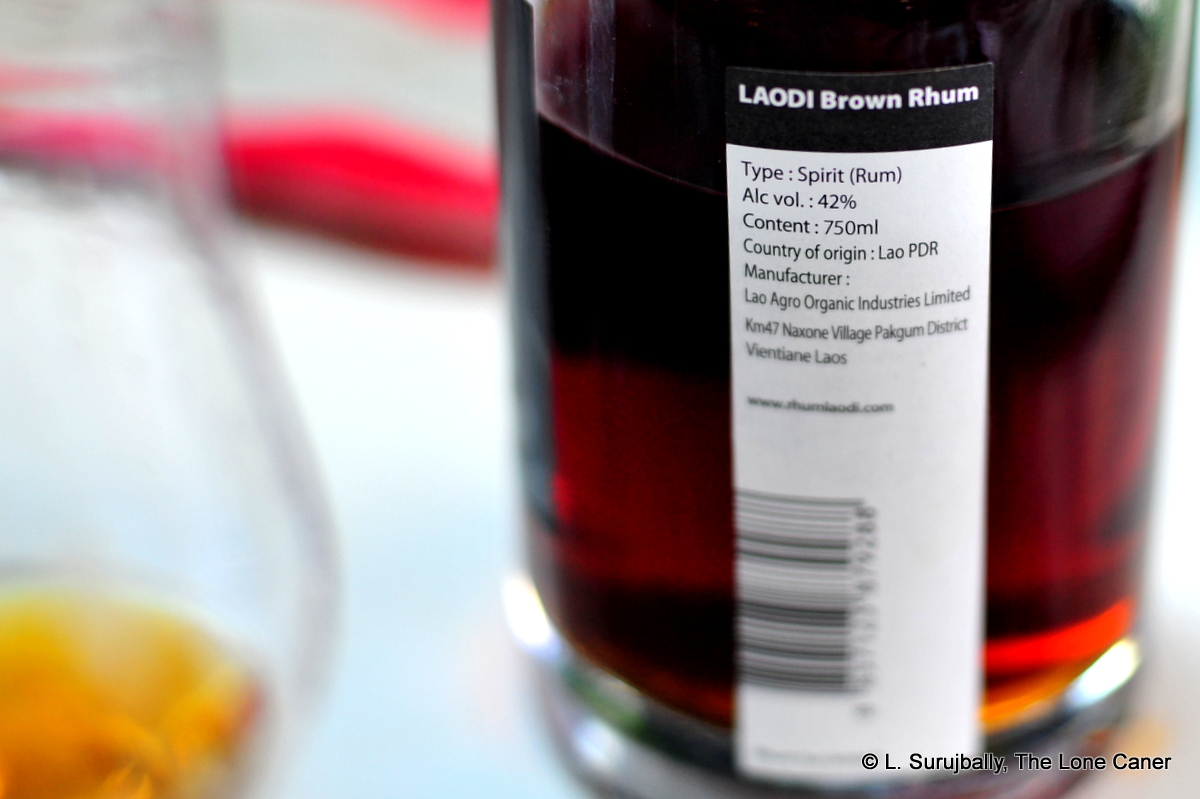



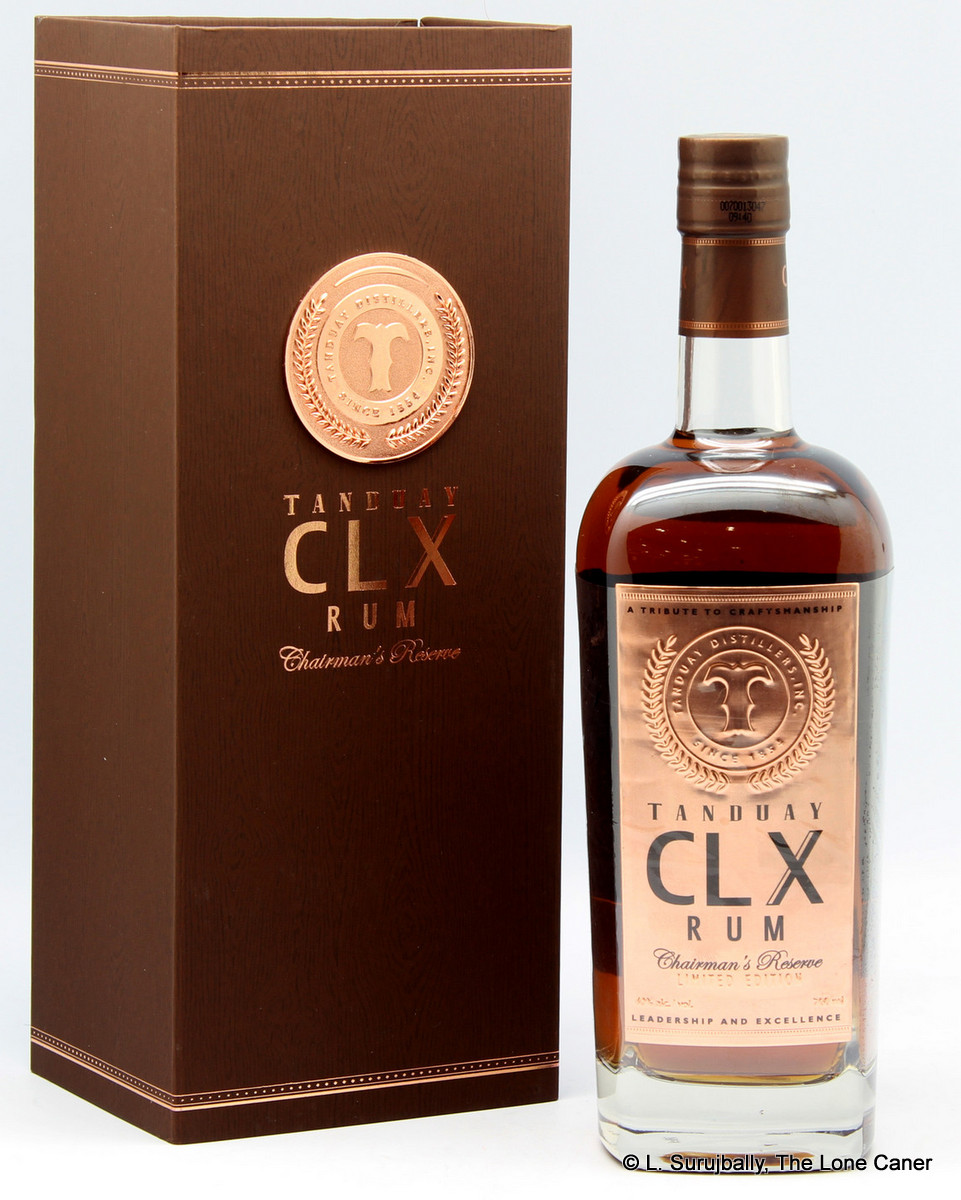
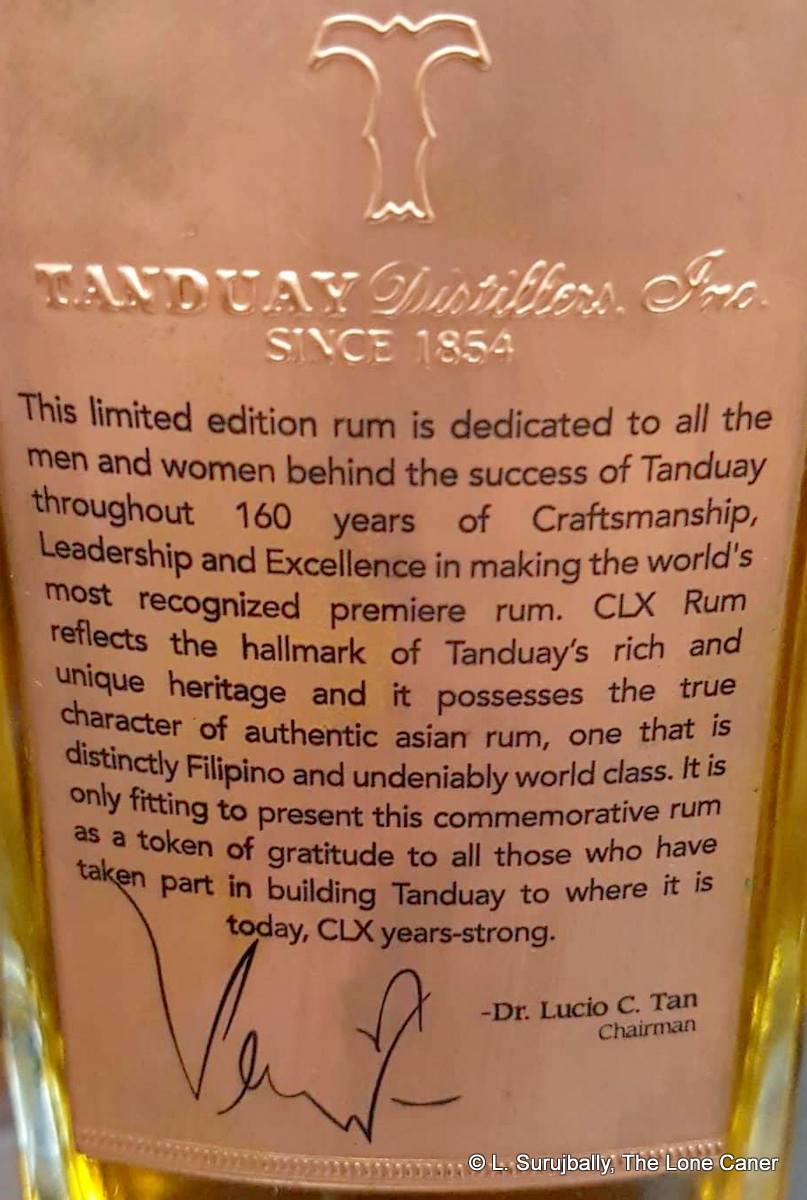 Anyway, when we’re done with do all the contorted company panegyrics and get down to the actual business of trying it, do all the frothy statements of how special it is translate into a really groundbreaking rum?
Anyway, when we’re done with do all the contorted company panegyrics and get down to the actual business of trying it, do all the frothy statements of how special it is translate into a really groundbreaking rum? 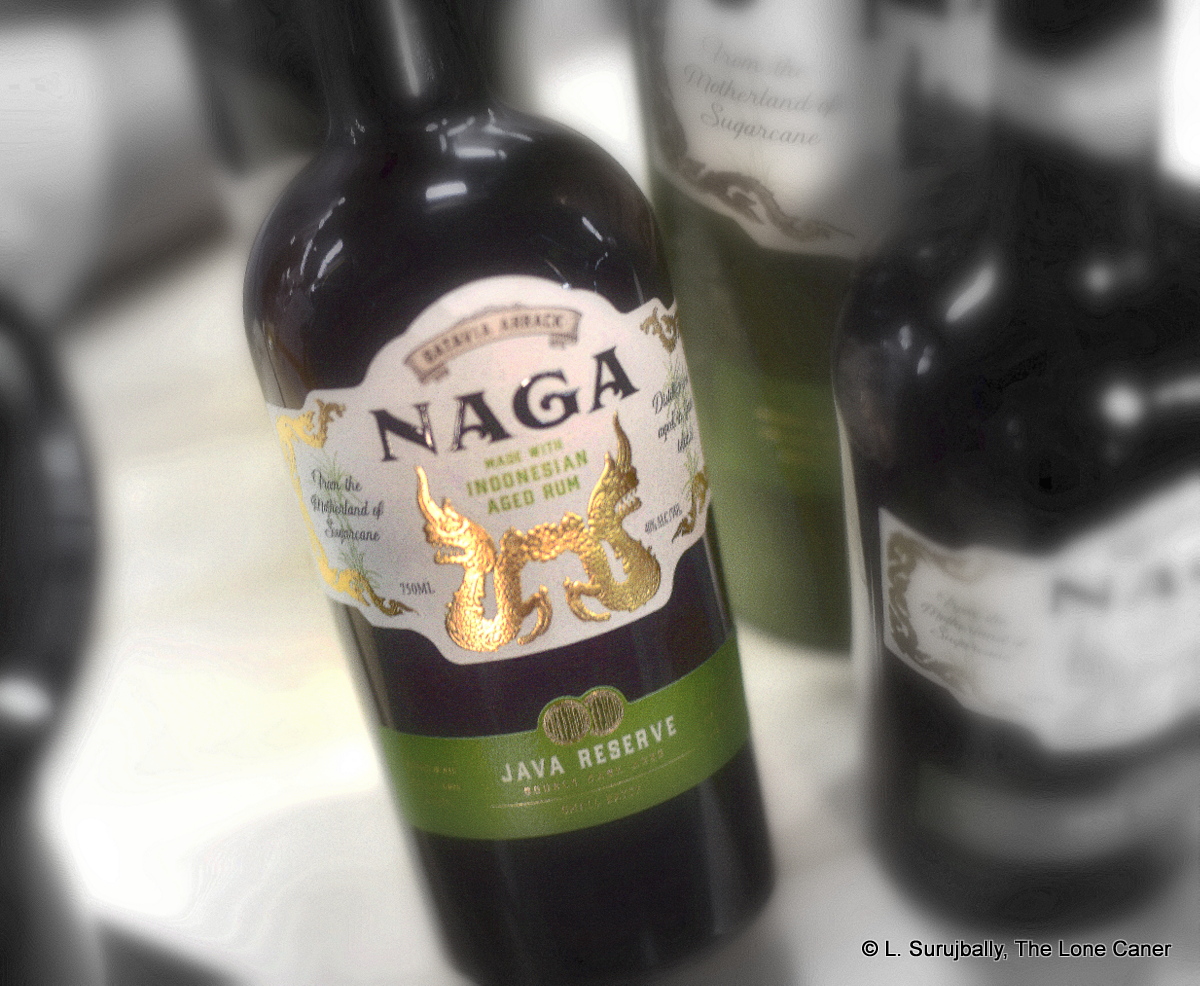
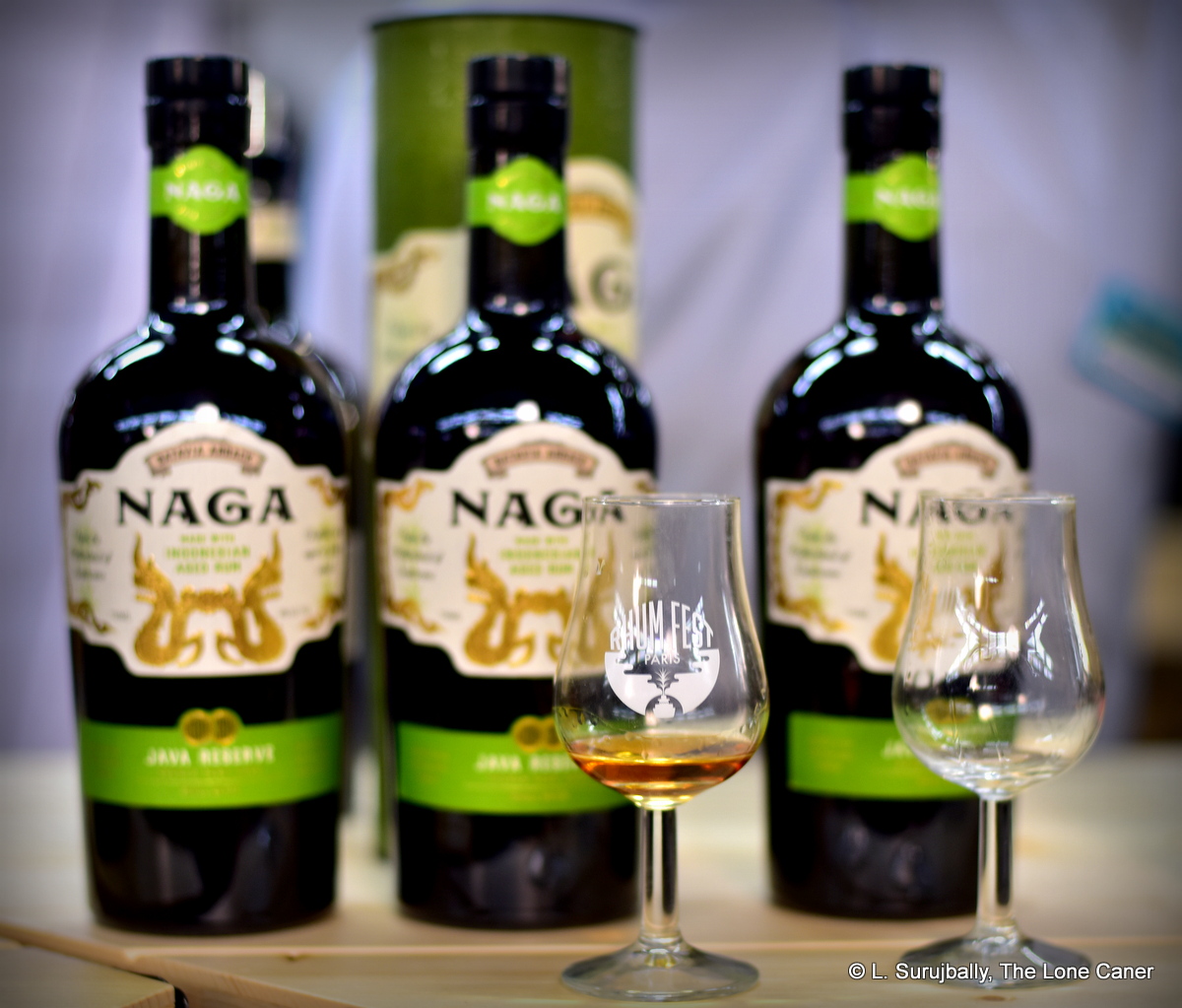
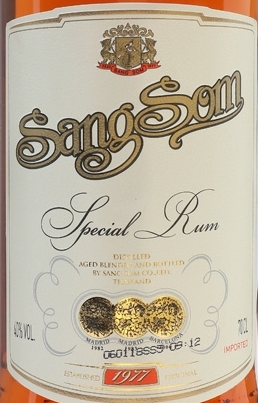 Like most rums of this kind, the opinions and comments are all over the map. Some are savagely disparaging, other more tolerant and some are almost nostalgic, conflating the rum with all the positive experiences they had in Thailand, where the rum is made. Few have had it in the west, and those that did weren’t writing much outside travel blogs and review aggregating sites.
Like most rums of this kind, the opinions and comments are all over the map. Some are savagely disparaging, other more tolerant and some are almost nostalgic, conflating the rum with all the positive experiences they had in Thailand, where the rum is made. Few have had it in the west, and those that did weren’t writing much outside travel blogs and review aggregating sites.
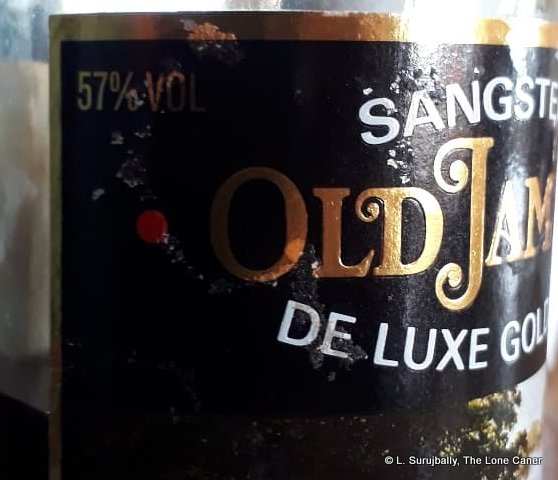 It is unknown from where he sourced his base stock. Given that this DeLuxe Gold rum was noted as comprising pot still distillate and being a blend, it could possibly be Hampden, Worthy Park or maybe even Appleton themselves or, from the profile, Longpond – or some combination, who knows? I think that it was likely between 2-5 years old, but that’s just a guess. References are slim at best, historical background almost nonexistent. The usual problem with these old rums. Note that after Dr. Sangster relocated to the Great Distillery in the Sky, his brand was acquired post-2001 by J. Wray & Nephew who do not use the name for anything except the rum liqueurs. The various blends have been discontinued.
It is unknown from where he sourced his base stock. Given that this DeLuxe Gold rum was noted as comprising pot still distillate and being a blend, it could possibly be Hampden, Worthy Park or maybe even Appleton themselves or, from the profile, Longpond – or some combination, who knows? I think that it was likely between 2-5 years old, but that’s just a guess. References are slim at best, historical background almost nonexistent. The usual problem with these old rums. Note that after Dr. Sangster relocated to the Great Distillery in the Sky, his brand was acquired post-2001 by J. Wray & Nephew who do not use the name for anything except the rum liqueurs. The various blends have been discontinued.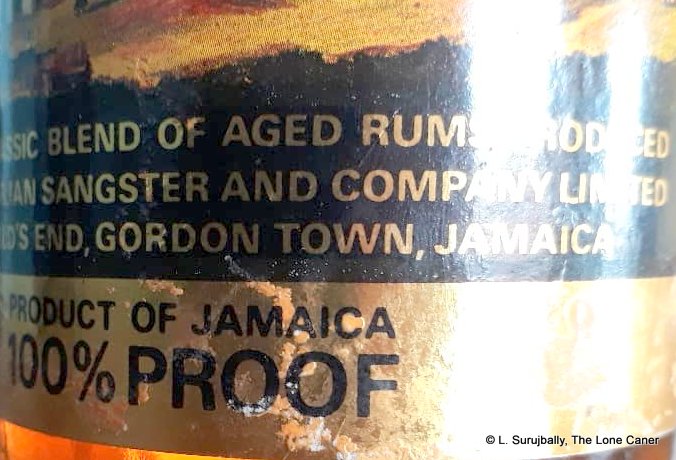 Nose – Opens with the scents of a midden heap and rotting bananas (which is not as bad as it sounds, believe me). Bad watermelons, the over-cloying reek of genteel corruption, like an unwashed rum strumpet covering it over with expensive perfume. Acetones, paint thinner, nail polish remover. That is definitely some pot still action. Apples, grapefruits, pineapples, very sharp and crisp. Overripe peaches in tinned syrup, yellow soft squishy mangoes. The amalgam of aromas doesn’t entirely work, and it’s not completely to my taste…but intriguing nevertheless It has a curious indeterminate nature to it, that makes it difficult to say whether it’s WP or Hampden or New Yarmouth or what have you.
Nose – Opens with the scents of a midden heap and rotting bananas (which is not as bad as it sounds, believe me). Bad watermelons, the over-cloying reek of genteel corruption, like an unwashed rum strumpet covering it over with expensive perfume. Acetones, paint thinner, nail polish remover. That is definitely some pot still action. Apples, grapefruits, pineapples, very sharp and crisp. Overripe peaches in tinned syrup, yellow soft squishy mangoes. The amalgam of aromas doesn’t entirely work, and it’s not completely to my taste…but intriguing nevertheless It has a curious indeterminate nature to it, that makes it difficult to say whether it’s WP or Hampden or New Yarmouth or what have you.  Finish – Shortish, dark off-fruits, vaguely sweet, briny, a few spices and musky earth tones.
Finish – Shortish, dark off-fruits, vaguely sweet, briny, a few spices and musky earth tones.
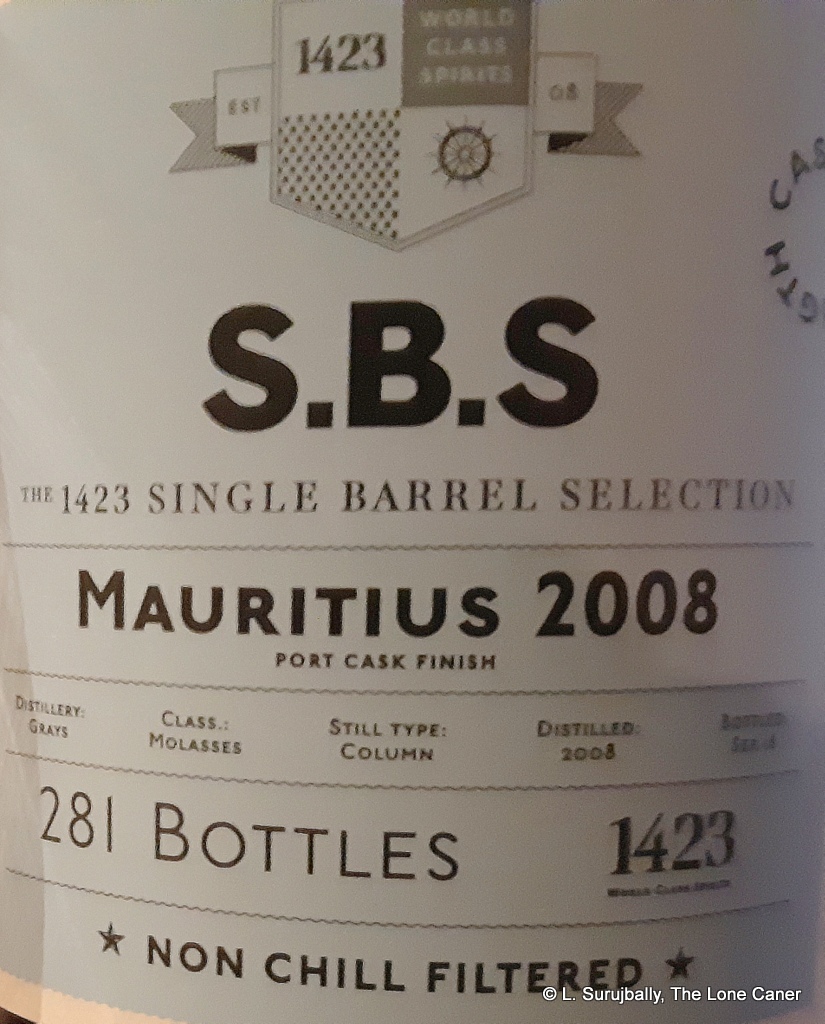 He considers for a moment, then shakes his head and pours me a delicate, neat shot of the Mauritius 2008. “Better start with this one. It’s a bit more…mellow. And anyway, you tried the Ghana last year in Berlin. If you need to, you can try it again later.”
He considers for a moment, then shakes his head and pours me a delicate, neat shot of the Mauritius 2008. “Better start with this one. It’s a bit more…mellow. And anyway, you tried the Ghana last year in Berlin. If you need to, you can try it again later.”
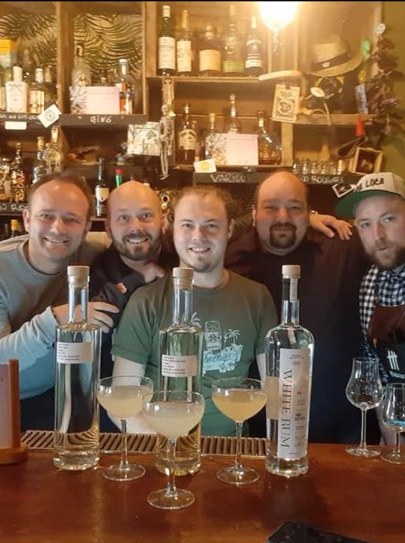
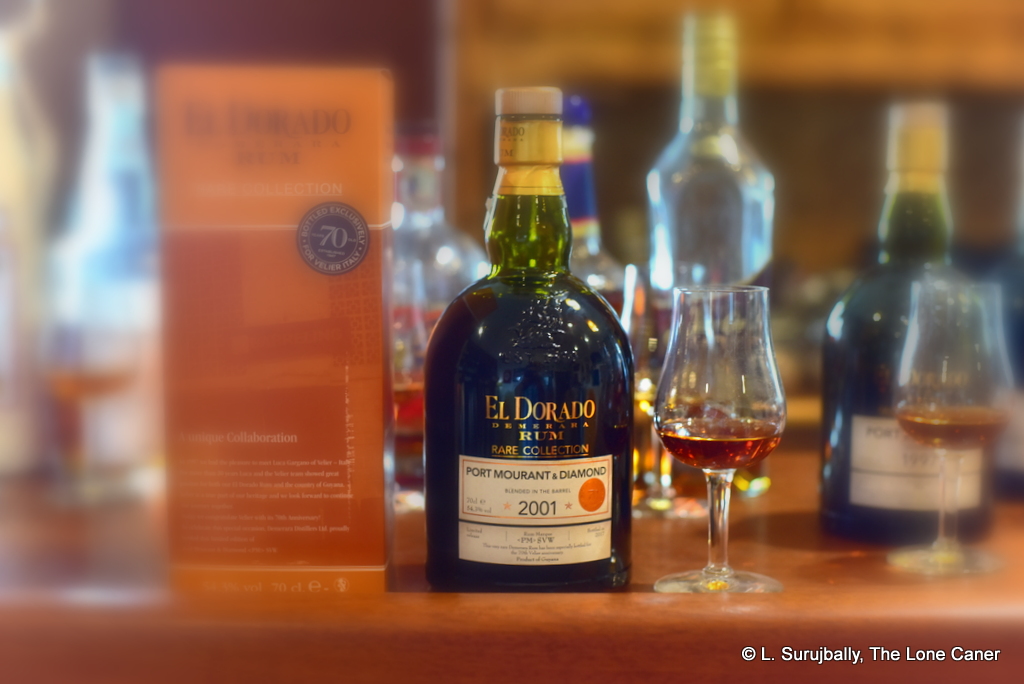
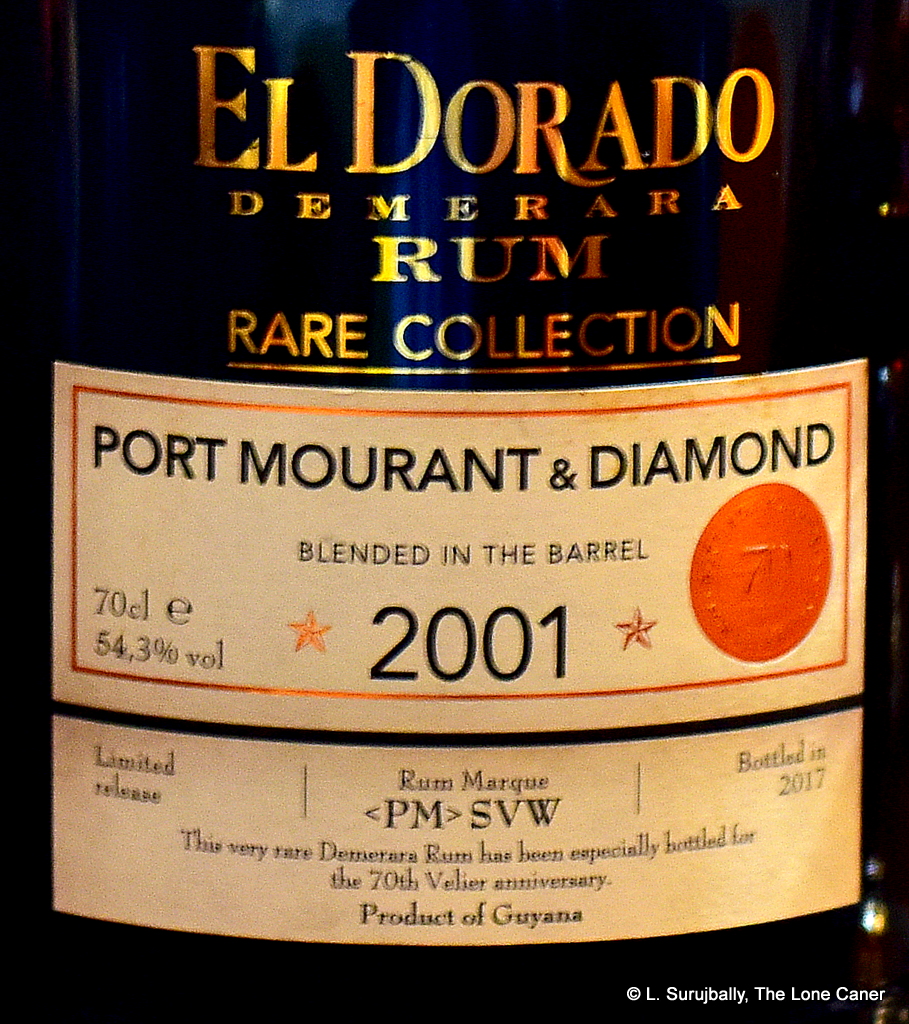 Knowing the Demerara rum profiles as well as I do, and having tried so many of them, these days I treat them all like wines from a particular chateau…or like James Bond movies: I smile fondly at the familiar, and look with interest for variations. Here that was the way to go. The nose suggested an almost woody men’s cologne: pencil shavings, some rubber and sawdust a la PM, and then the flowery notes of a bull squishing happily way in the fruit bazaar. It was sweet, fruity, dark, intense and had a bedrock of caramel, molasses, toffee, coffee, with a great background of strawberry ice cream, vanilla, licorice and ripe yellow mango slices so soft they drip juice. The balance between the two stills’ output was definitely a cut above the ordinary.
Knowing the Demerara rum profiles as well as I do, and having tried so many of them, these days I treat them all like wines from a particular chateau…or like James Bond movies: I smile fondly at the familiar, and look with interest for variations. Here that was the way to go. The nose suggested an almost woody men’s cologne: pencil shavings, some rubber and sawdust a la PM, and then the flowery notes of a bull squishing happily way in the fruit bazaar. It was sweet, fruity, dark, intense and had a bedrock of caramel, molasses, toffee, coffee, with a great background of strawberry ice cream, vanilla, licorice and ripe yellow mango slices so soft they drip juice. The balance between the two stills’ output was definitely a cut above the ordinary.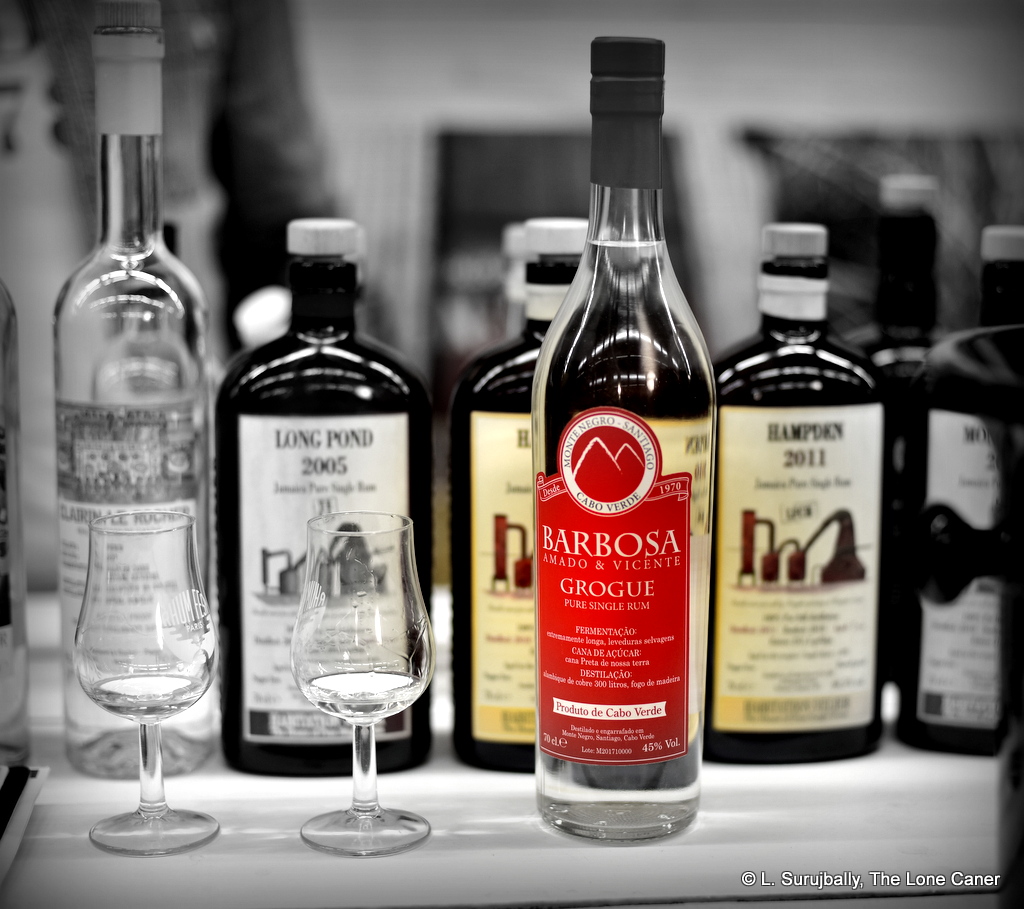
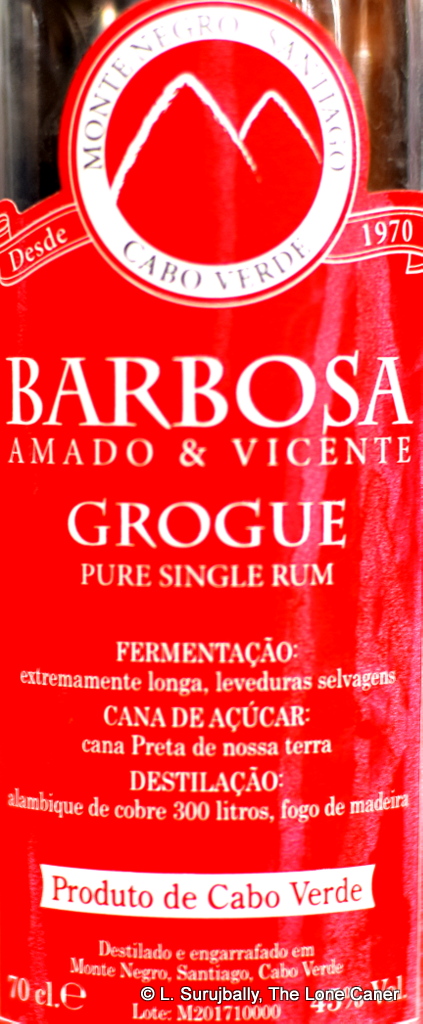 This was also the case when tasted. The bright and clean fruity-ester notes were more in evidence here than on the nose — green apples, sultanas, hard yellow mangoes, thyme, more pineapples, a bag of white guavas and watery pears. There was a hint of danger in the hint of cucumbers in white vinegar with a pimento or two floating around, but this never seriously came forward, a hint was all you got; and at best, with some concentration, there were some additional herbs (dill, cilantro), grass, sugar water and maybe a few more olives. I particularly liked the mild finish, by the way – clear and fruity and minty, with thyme, wet grass, and some almonds and white chocolate, sweet and unassuming, just right for what had come before.
This was also the case when tasted. The bright and clean fruity-ester notes were more in evidence here than on the nose — green apples, sultanas, hard yellow mangoes, thyme, more pineapples, a bag of white guavas and watery pears. There was a hint of danger in the hint of cucumbers in white vinegar with a pimento or two floating around, but this never seriously came forward, a hint was all you got; and at best, with some concentration, there were some additional herbs (dill, cilantro), grass, sugar water and maybe a few more olives. I particularly liked the mild finish, by the way – clear and fruity and minty, with thyme, wet grass, and some almonds and white chocolate, sweet and unassuming, just right for what had come before.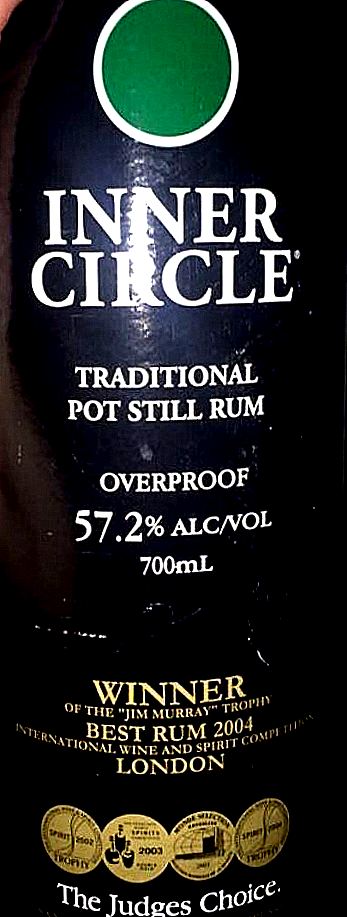 Rumaniacs Review # 096 | 0617
Rumaniacs Review # 096 | 0617

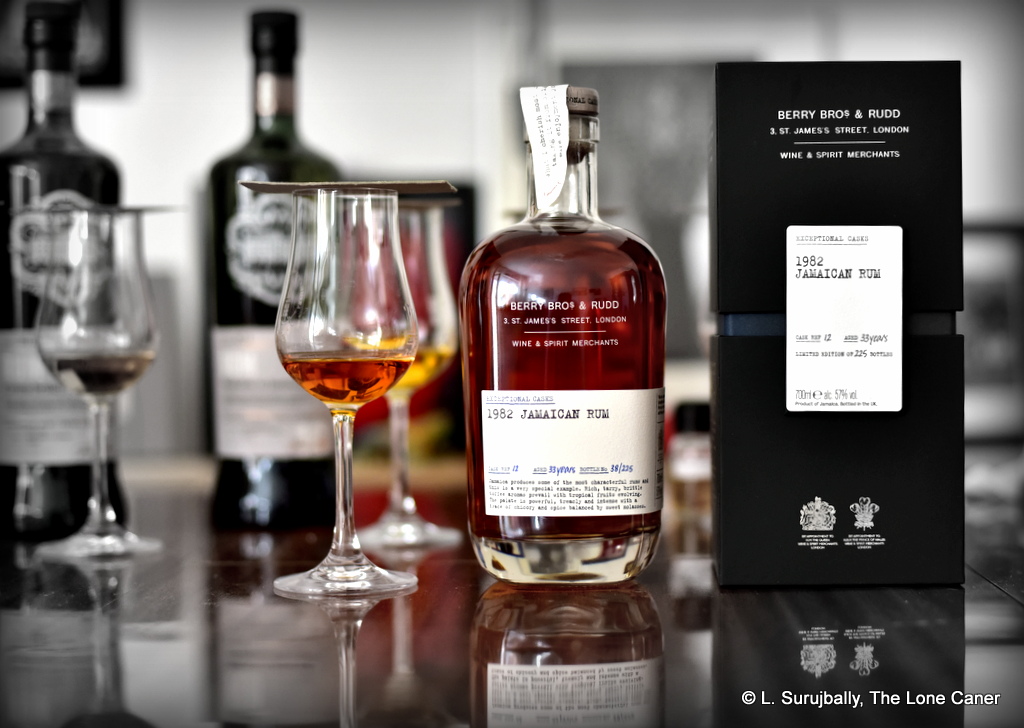
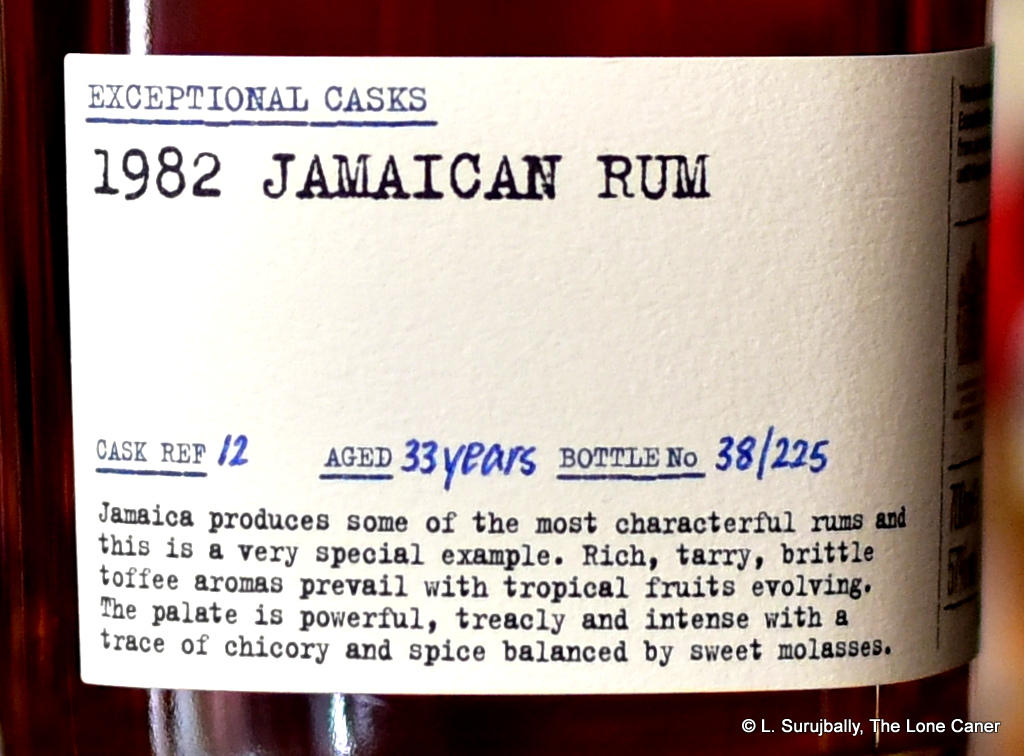
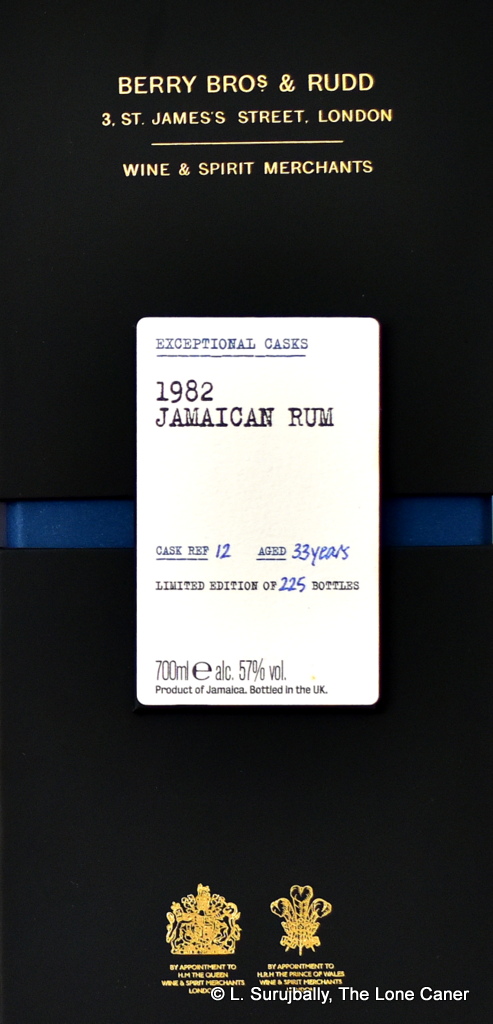



 So the search for more info begins. Now, if you’re looking on
So the search for more info begins. Now, if you’re looking on 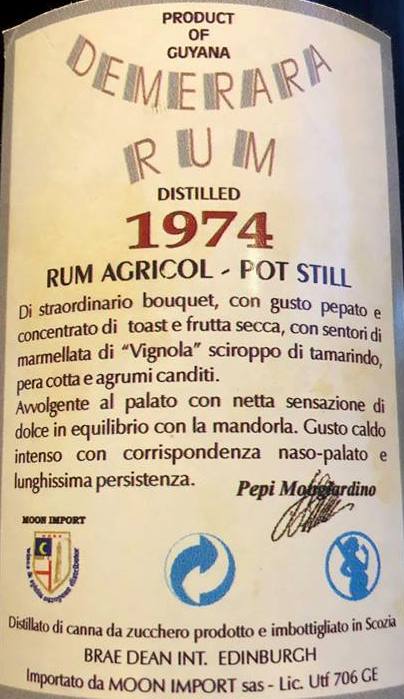 With respect to the palate, at 46%, much as I wish it were stronger, the rum is simply luscious, perhaps too much so – had it been sweeter (and it isn’t) it might have edged dangerously close to a cloying mishmash, but as it is, the cat’s-tongue-rough-and-smooth profile was excellent. It melded leather and the creaminess of salt butter and brie with licorice, brown sugar, molasses and butter cookies (as a hat tip to them barking-mad northern vikings, I’ll say were Danish). Other tastes emerge: prunes and dark fruit – lots of dark fruit. Blackberries, plums, dates. Very dense, layer upon layer of tastes that combined really really well, and providing a relatively gentle but tasteful summary on the finish. Sometimes things fall apart (or disappear entirely) at this stage, but here it’s like a never ending segue that reminds us of cedar, sawdust, sugar raisins, plums, prunes, and chocolate oranges.
With respect to the palate, at 46%, much as I wish it were stronger, the rum is simply luscious, perhaps too much so – had it been sweeter (and it isn’t) it might have edged dangerously close to a cloying mishmash, but as it is, the cat’s-tongue-rough-and-smooth profile was excellent. It melded leather and the creaminess of salt butter and brie with licorice, brown sugar, molasses and butter cookies (as a hat tip to them barking-mad northern vikings, I’ll say were Danish). Other tastes emerge: prunes and dark fruit – lots of dark fruit. Blackberries, plums, dates. Very dense, layer upon layer of tastes that combined really really well, and providing a relatively gentle but tasteful summary on the finish. Sometimes things fall apart (or disappear entirely) at this stage, but here it’s like a never ending segue that reminds us of cedar, sawdust, sugar raisins, plums, prunes, and chocolate oranges.